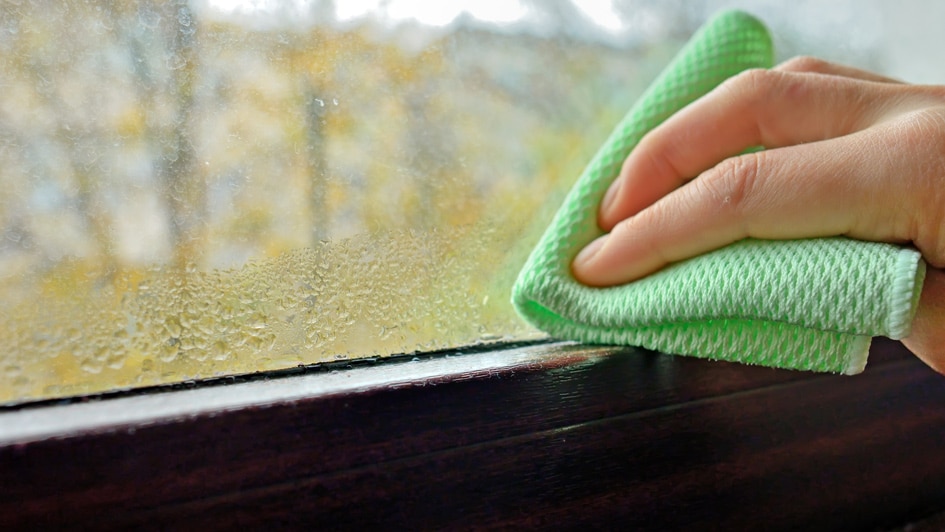The windows throughout your home open up to the outdoors, a way to draw light in as you take in the view of your garden, yard or other surroundings. The last thing you need to see is a sweaty window plastered in a film of condensation.
Not only are windows coated in condensation unappealing, they also can be a symptom of a more serious air-quality problem throughout your home. Luckily, there’s multiple things you can try to address the problem.
What Causes Sweating in Windows
Condensation on the inside of windows is created by the moist warm air in your home hitting the cooler surface of the windows. It’s particularly prevalent over the winter when it’s much cooler outside than it is in your home.
Inside Moisture vs. In Between Panes
When dealing with condensation, it’s necessary to know the difference between moisture on the inside of your windows compared to moisture in between the windowpanes. One is an air-quality issue and the other is a window issue.
- Moisture within a window is produced from the warm moist air inside your home collecting along the glass.
- Existing moisture you notice between windowpanes is caused when the window seal stops working and moisture seeps between the two panes of glass, and by then the window has to be repaired or replaced.
- Condensation on the inside of the windows isn’t a window issue and can instead be resolved by fine-tuning the humidity across your home. Different things generate humidity inside a home, such as showers, cooking, bathing or even breathing.
Why Sweating Windows Can Be an Issue
Though you might think condensation inside your windows is a cosmetic problem, it may also be evidence your home has higher humidity. If this is the case, water might also be condensing on window frames, cold walls or other surfaces. Even a thin film of water can encourage wood surfaces to mildew or rot over time, fostering the growth of mildew or mold.
How to Decrease Humidity Throughout Your Home
The good news is there are numerous options for eliminating moisture from the air throughout your home.
If you have a humidifier running in your home – whether it be a smaller unit or a whole-house humidifier – lower it further so the humidity inside your home goes down.
If you don’t have a humidifier running and your home’s humidity level is higher than you prefer, consider purchasing a dehumidifier. While humidifiers put moisture into your home so the air doesn’t get too dry, a dehumidifier pulls excess moisture out of the air.
Smaller, portable dehumidifiers can eliminate the water from one room. However, these units require clearing water trays and usually service a fairly small area. A whole-house dehumidifier will extract moisture across your entire home.
Whole-house dehumidifier systems are regulated by a humidistat, which allows you to establish a humidity level precisely like you would select a temperature with your thermostat. The unit will run immediately when the humidity level surpasses the set level. These systems coordinate with your home’s HVAC system, so you will receive the best results if you contact qualified professionals for whole-house dehumidifier installation Beckley.
Additional Ways to Lower Condensation on Windows
- Exhaust fans. Installing exhaust fans near humidity hotspots including the bathroom, laundry room or above the oven can help by extracting the warm, humid air from these rooms out of your home before it can increase the humidity level in your home.
- Ceiling fans. Spinning ceiling fans can also keep air moving inside the home so humid air doesn’t get stuck in one area.
- Opening your window treatments. Pulling open the blinds or drapes can decrease condensation by stopping the damp air from being trapped against the windowpane.
By decreasing humidity across your home and dispersing air throughout your home, you can make the most of clear, moisture-free windows even in the middle of the winter.




